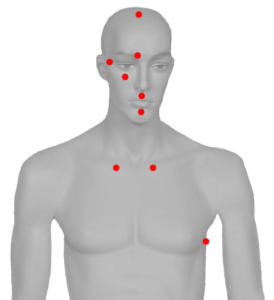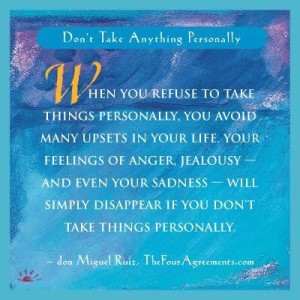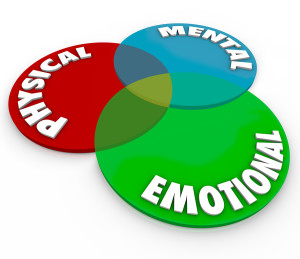Emotional Freedom Techniques (EFT) Rooted In Ancient India
Approximately 5,000 years ago, the people of ancient India proposed that a system of channels ran through the body, carrying energy or Prana throughout the mind/body system.
They called these energy pathways Nadi lines. About 2,000 years later, the Chinese suggested a similar system of energy pathways that they called meridians, which transported Qi throughout the body. Many years later, a man named George Lucas would describe this energy as The Force, which surrounds and binds the universe, but that’s a topic for a different post.
Continued with the Chinese
The Chinese identified 12 paired meridians, each associated to an organ or system in the body and two “Extraordinary Vessels,” the Conception Vessel and the Governing Vessel, which serve as reservoirs for the energy that runs through the meridians. Half of the meridians were
designated as Yin meridians, which “represent the positive qualities and problematic states in relationship to our inner self and world (beliefs about who we are and aren’t, our self-concepts, internal family systems, dissociated and owned parts) and half the Yang meridians, which reflect relationship to the outer world (situations, institutions/organizations and all relationships).” (Meridian Characteristics in Energy Psychology, Eldrginhoff, Oct 2012).
Tattooed On A Mummy
The Meridian pathways have been used by acupuncturists to treat both physical and mental conditions since their discovery. Acupuncturists place needles along the appropriate meridian lines to open the flow of energy, which presumably has been blocked by physical or emotional trauma, and bring healing. Awareness of and use of the meridians was apparent in the discovery of Ötzi, the natural mummy of a man who lived around 3,300 B.C.E. and had been frozen in a glacier on the border between Italy and Austria. On his body were tattoos that traced meridian lines. Strangely, the meridian lines that were traced corresponded to the points where a modern acupuncturist would place needles to treat medical conditions, discovered on necropsy, from which Ötzi appeared to suffer.
And Rediscovered by East/West Healers
About 30 years ago, psychologist, Roger Callahan, PhD, a student of Chinese medicine, discovered that stimulating the meridians of his patients, while they were in an emotionally activated state, helped to reduce the intensity of that emotion. Callahan found the technique useful in helping to reduce the impact of phobias and trauma. He called his technique Thought Field Therapy (TFT), which involves the use of algorithms or specific patterns of tapping on designated meridians for treating specific conditions.
In the mid-1990s, Gary Craig, a Stanford-trained engineer who was interested in self-improvement and coaching, sought to use the same principles to create a more user friendly tapping treatment which he called Emotional Freedom Techniques (EFT). Rather than individualized tapping algorithms, EFT simplifies the tapping procedure by offering a “Basic Recipe” that includes 7 of the 12 meridians and the two governing vessels. An additional technique includes 5 more meridian points plus eye movements and right/left brain activation techniques popularized by Neurolinguistic Programing (NLP).
Unfortunately, Gary Craig failed to copyright or trademark the terms “Emotional Freedom Techniques” or “EFT.” He magnanimously released his highly effective techniques to the world. People promptly began to change and rebrand the techniques to suit their own needs. They began to popularize and capitalize on the effective tapping techniques. Many of these spin-offs have strayed from the original design of EFT, resulting in more marketable but diluted and less effective versions. Gary’s daughter, Tina Craig, worked to standardize the work of her father and established Gold Standard EFT. Other reputable organization such as the Association For Comprehensive Energy Psychology, EFT Universe and AAMET offer training in EFT. Various trainings are geared toward licensed mental health professionals, some toward allied mental health professionals and others more generally offered. Consumers should be aware that Emotional Freedom Techniques (EFT) is tapping but not all tapping is EFT.
Emotional Freedom Techniques is a powerful therapeutic tool that can be especially valuable in helping clear traumatic events that may be negatively impacting how we move about in the world. The techniques are especially helpful when guided by a well-trained and experienced EFT professional. This effectiveness is being supported by an increasing amount of research.
Email me with any questions or if you are interested in working face-to-face or remotely.







